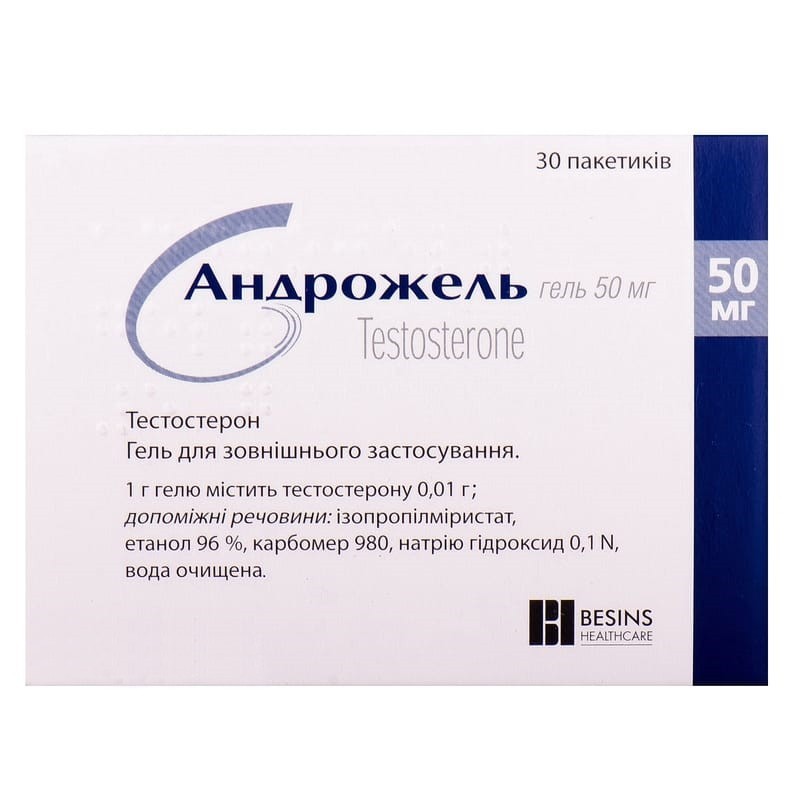



 Secure and encrypted payment processing
Secure and encrypted payment processing We ship to over 40 countries including the USA, UK, Europe, Australia and Japan
We ship to over 40 countries including the USA, UK, Europe, Australia and Japan Guaranteed refund or reship if you haven't received your order
Guaranteed refund or reship if you haven't received your orderTestosterone, secreted by the testicles, and its main metabolite, dihydrotestosterone, are endogenous androgens and are responsible for the development of external and internal genital organs, as well as secondary sexual characteristics in men (stimulation of hair growth, coarsening of the voice, development of libido), stimulate protein anabolism, the development of skeletal muscles and the distribution of adipose tissue, reduces the excretion of water and the level of nitrogen, sodium, potassium, chlorine and phosphorus in the urine. Testosterone does not cause testicular development, as it has an antigonadotropic effect. in some target organs, testosterone acts after peripheral conversion to estradiol, which binds to estrogen receptors in the nuclei of target organ cells, such as the pituitary gland, adipose tissue, brain, bones, and Leydig cells in the testes.
9-14% of the applied dose of testosterone is absorbed through the skin. After absorption, testosterone diffuses into the systemic circulation with a relatively constant concentration for 24 hours.
The concentration of testosterone in blood plasma rises from the first hour after application, reaching a constant level from the second day. After this, the diurnal changes in the concentration of testosterone have an amplitude characteristic of the circadian rhythm of endogenous testosterone secretion. Thus, the transdermal route of administration avoids the peak rises in the concentration of the drug in the blood that occur after injection, and concentrations exceeding the physiological levels in the liver with oral administration of androgens.
The introduction of 5 g of the drug provides an increase in the concentration of testosterone in blood plasma by approximately 2.5 ng / ml (8.7 nmol / l). After discontinuation of the drug, the concentration of testosterone begins to decrease approximately 24 hours after the last dose. The concentration returns to baseline approximately 72–96 hours after the last dose.
The main active metabolites of testosterone are dehydrotestosterone and estradiol. Testosterone is excreted mainly in the urine, as well as with feces in the form of conjugated metabolites.
Hormone replacement therapy with testosterone in men with endogenous testosterone deficiency, if its deficiency is clinically and laboratory confirmed.
The recommended dose for adults and older men - 5 g of gel (50 mg of testosterone) is applied 1 time per day, preferably at the same time in the morning. the daily dose is selected individually, but should not exceed 10 g of gel per day. It is advisable to increase the dose in stages, adding 2.5 g of gel. the gel is applied by the patient himself to clean, dry, healthy skin on his shoulders, arms or stomach.
After opening the bag, all its contents should be squeezed out and immediately applied to the skin. The gel should not be rubbed into the skin, and lightly distribute it on the skin with a thin layer. Allow to dry for at least 3-5 minutes before dressing. After applying the gel, wash your hands with soap. Do not apply the gel on the genitals (penis and testicles), since alcohol in high concentrations can cause local irritation.
The required concentration of testosterone in blood plasma is reached approximately on the 2nd day of treatment with Androgel. To adjust the dose of testosterone, the concentration of testosterone in the blood serum should be measured in the morning before applying the gel, starting from the 3rd day of administration (more appropriate a week after starting treatment).
The dose can be reduced if the concentration of testosterone in the blood plasma is increased. If the concentration is low, the dose can be increased, but not more than 10 g of gel per day. There is no data on the clinical use of the drug in men under the age of 18 years. Androgel is not intended for use in children.
Diagnosed or suspected prostate cancer or breast cancer; known hypersensitivity to testosterone or another component of the drug.
Most often, when applying the recommended dose (5 g of gel per day), skin reactions can occur (10%): skin irritation at the site of application or erythema, acne, dry skin.
Adverse reactions recorded in 1-10% of patients treated with Androgel during controlled clinical trials are shown in the table below.
| Organ system | Frequent adverse reactions (1/100, 1/10) |
|---|---|
| Blood system and lymphatic system | Changes in laboratory tests (changes in lipid levels and red blood cell count in blood plasma) |
| General disorders and at the injection site | Headache |
| urinary system | Prostate disorders |
| Reproductive system and mammary glands | Gynecomastia, mastalgia |
| Neurological disorders | Dizziness, paresthesia, amnesia, hyperesthesia |
| Mental disorders | Mood disorder |
| Vascular disorders | Hypertension |
| Gastrointestinal tract | Diarrhea |
| Skin and subcutaneous tissue | Alopecia, urticaria |
Gynecomastia, which may be permanent, is often found in patients who are treated for hypogonadism. According to the literature, other known adverse reactions were reported after treatment with oral or injectable drugs containing testosterone. They are listed in the table below.
| Organ system | Adverse reactions |
|---|---|
| Metabolic disease | An increase in body weight, a change in the level of electrolytes (delay in sodium, chloride, potassium, calcium, inorganic phosphate and water) when taking high doses and / or long-term therapy |
| Musculoskeletal system | Muscle cramps |
| Mental disorders | Irritability, depression, hostility |
| Respiratory system | Sleep apnea |
| Hepatobiliary system | In very rare cases, jaundice and changes in liver function indicators |
| Skin and subcutaneous tissue | Various skin reactions, including acne, seborrhea, and baldness |
| The reproductive system and milk |